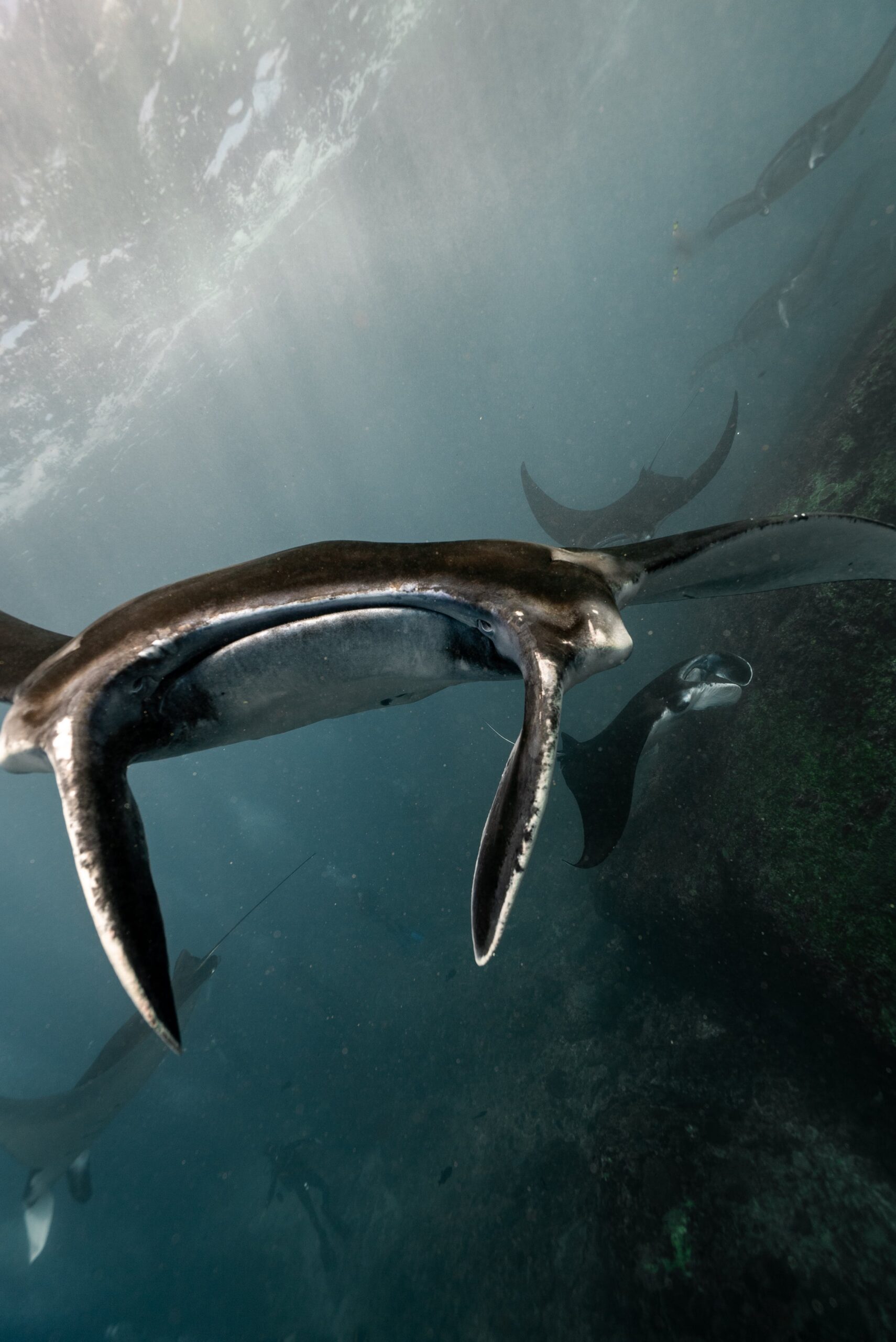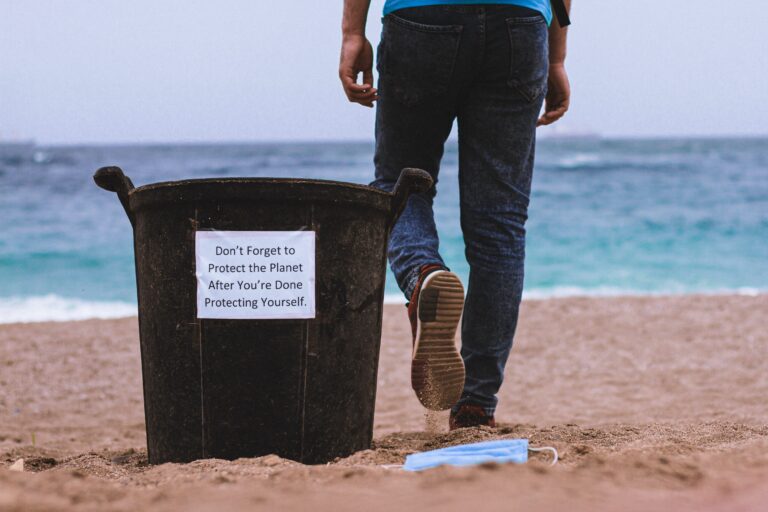Introduction
Our oceans, teeming with diverse marine life, play a crucial role in maintaining the balance of our planet’s ecosystems. However, they are facing an unprecedented threat – pollution. The increasing levels of marine pollution pose severe risks to aquatic life, ecosystems, and even human health. In this blog post, we delve into the importance of ocean conservation and the critical role that effective marine pollution monitoring plays in preserving the health and vitality of our oceans.
Types of Marine Pollution
i. Plastic Pollution
Plastic pollution is a pervasive environmental issue that poses a significant threat to marine ecosystems. Discarded plastic items, such as bottles, bags, and microplastics, find their way into the oceans, impacting marine life at various levels. These non-biodegradable materials can persist for centuries, causing entanglement and ingestion issues for marine species.
ii. Oil Spills
Oil spills are catastrophic events that release large quantities of petroleum into marine environments. These spills result from human activities such as oil drilling, transportation, and industrial accidents. The consequences are dire, as oil coats marine animals, disrupts their buoyancy, and contaminates their habitats. The long-term impact of oil spills can be devastating, causing lasting harm to both individual organisms and entire ecosystems.
iii. Chemical Pollutants
Chemical pollutants, often discharged from industrial and agricultural activities, introduce toxic substances into marine ecosystems. Pesticides, heavy metals, and other chemicals can accumulate in the water, adversely affecting marine life. These pollutants may lead to physiological and reproductive issues in marine organisms, creating a cascade of negative effects throughout the food chain.
Consequences for Marine Life
i. Harm to Marine Species
Marine pollution poses a direct threat to various species, ranging from small fish to majestic marine mammals. Ingestion of plastics and exposure to chemical contaminants can lead to deformities, diseases, and reproductive complications. The impact is not limited to individual organisms but extends to entire populations, jeopardizing the health of marine species worldwide.
ii. Disruption of Ecosystems
The intricate balance of marine ecosystems is severely disrupted by pollution. Oil spills, for instance, coat coastlines and affect the abundance and distribution of marine organisms. The loss of biodiversity within ecosystems can trigger a domino effect, leading to further imbalances and threatening the survival of numerous species that depend on these delicate relationships.
iii. Impact on Biodiversity
Marine pollution contributes to the decline of biodiversity in oceans, with far-reaching consequences. As pollutants accumulate, some species may thrive while others decline, leading to shifts in the composition of marine communities. The loss of biodiversity weakens the resilience of ecosystems, making them more susceptible to additional stressors such as climate change and overfishing.
In conclusion, understanding the types of marine pollution and their consequences for marine life is crucial for developing effective conservation strategies. By addressing these issues, we can work towards preserving the health and vitality of our oceans and safeguarding the countless species that call them home.
The Importance of Marine Pollution Monitoring
Marine pollution is a pressing global concern with far-reaching ecological, economic, and public health implications. Effective monitoring plays a pivotal role in mitigating these impacts by facilitating early detection, prevention, and informed decision-making. This article explores the critical significance of marine pollution monitoring, emphasizing its role in safeguarding our oceans.
Early Detection and Prevention
Surveillance Technologies:
Cutting-edge surveillance technologies have revolutionized our ability to monitor marine ecosystems in real-time. From underwater drones to autonomous vehicles, these tools allow scientists and authorities to identify and respond swiftly to emerging pollution threats. These technologies provide a proactive approach, enabling early detection before pollutants can cause irreparable harm to marine life.
Remote Sensing Applications:
Remote sensing satellites offer a bird’s-eye view of vast ocean expanses, allowing for comprehensive monitoring of pollution patterns. By analyzing satellite imagery, scientists can pinpoint areas of concern, track the movement of pollutants, and assess the extent of contamination. This high-tech approach enhances our capacity to implement timely interventions, preventing the escalation of marine pollution incidents.
Data-Driven Decision-Making
Monitoring and Analyzing Pollution Trends:
Accurate and up-to-date data are the foundation of effective decision-making. Continuous monitoring helps create detailed profiles of pollution trends, enabling scientists to understand the dynamics of marine ecosystems. By identifying patterns and fluctuations, decision-makers can anticipate potential threats and implement proactive measures to mitigate pollution risks.
Identifying Sources of Pollution
Marine pollution monitoring plays a crucial role in source identification. By analyzing data on pollutant concentrations and their distribution, scientists can trace the origins of contamination. This knowledge is invaluable for regulatory agencies and industries alike, as it allows for targeted efforts to address specific pollution sources and prevent further environmental degradation.
Implementing Targeted Solutions
Armed with comprehensive data, decision-makers can develop and implement targeted solutions to address marine pollution. Whether through stricter regulations, pollution control measures, or community engagement, the insights gained from monitoring efforts guide the implementation of effective strategies. This data-driven approach ensures that resources are allocated efficiently, maximizing the impact of pollution prevention initiatives.
In conclusion, marine pollution monitoring is not just a scientific endeavor but a crucial component of global environmental stewardship. Through early detection, data-driven decision-making, and targeted solutions, monitoring efforts contribute significantly to the preservation of our oceans for current and future generations.
Technological Limitations in Marine Pollution Monitoring
Effective monitoring of marine pollution faces significant challenges due to technological limitations. The need for advanced monitoring tools is paramount in addressing the dynamic nature of pollutants in oceans. Traditional methods may fall short in providing real-time data, making it crucial to invest in cutting-edge technologies. Remote sensing, autonomous underwater vehicles (AUVs), and satellite-based monitoring systems can enhance the accuracy and efficiency of data collection.
Moreover, the integration of artificial intelligence (AI) holds immense potential in revolutionizing marine pollution monitoring. AI can analyze vast datasets quickly, identify patterns, and predict pollution trends. Machine learning algorithms can enhance the precision of data interpretation, enabling authorities to take timely and targeted actions. Embracing AI technologies can significantly improve the effectiveness of marine pollution monitoring, offering a proactive approach to environmental conservation.
International Cooperation in Marine Pollution Monitoring
Addressing the global issue of marine pollution requires robust international cooperation. Coordination among nations is essential to establish standardized monitoring protocols and share vital information. A unified approach ensures that efforts to monitor and combat pollution are synchronized, preventing regulatory loopholes that may be exploited by offenders.
Furthermore, the sharing of data and best practices is critical in fostering a collaborative global response to marine pollution. Countries can benefit from each other’s experiences, learning from successful initiatives and avoiding pitfalls. Establishing international platforms for data exchange and knowledge-sharing can contribute to a comprehensive understanding of pollution patterns, facilitating more effective preventive measures and response strategies.
In conclusion, overcoming the challenges in marine pollution monitoring necessitates a multi-faceted approach. Investing in advanced monitoring tools and incorporating artificial intelligence can elevate the precision and efficiency of data collection and analysis. Simultaneously, fostering international cooperation ensures a unified front against marine pollution, promoting the sharing of data and best practices for a sustainable and healthier marine environment.

Successful Pollution Reduction Projects
In the realm of environmental conservation, pollution reduction projects have played a pivotal role in restoring ecosystems and safeguarding biodiversity. One notable case study is the Clean Air Act in the United States. Enacted in 1970, this legislation aimed to combat air pollution by regulating emissions from industrial sources and vehicles. Over the decades, the act has significantly improved air quality, leading to a decrease in respiratory diseases and the restoration of ecosystems adversely affected by pollutants.
Similarly, the rejuvenation of the Thames River in London stands as a testament to successful pollution reduction. Once considered one of the most polluted rivers globally, a series of initiatives, including improved wastewater treatment and stricter regulations on industrial discharges, have led to a remarkable recovery. The return of diverse aquatic life and the revitalization of surrounding ecosystems underscore the positive impact of concerted pollution reduction efforts.
Conservation Efforts that Made a Significant Impact
Conservation initiatives extend beyond pollution reduction, with success stories worldwide. The reintroduction of the gray wolf to Yellowstone National Park in the United States serves as an inspiring example. By restoring a key predator to the ecosystem, the initiative triggered a cascade effect, leading to the recovery of vegetation, improved riverbank stability, and enhanced biodiversity. This holistic approach exemplifies how targeted conservation efforts can have far-reaching positive impacts on entire ecosystems.
b. Community Involvement
Local Initiatives and Grassroots Movements
Community involvement is a cornerstone of successful conservation initiatives. The Chipko Movement in India exemplifies the power of grassroots action. Originating in the 1970s, this movement saw local communities hug or ’embrace’ trees to prevent their felling. The collective efforts not only protected forests but also raised awareness about sustainable resource management, influencing policies for years to come.
The Role of Education and Awareness
Education and awareness play a pivotal role in fostering a sense of responsibility towards the environment. The “Leave No Trace” principles, widely promoted in outdoor and wilderness communities, emphasize responsible recreation to minimize environmental impact. Through education, individuals gain insights into their role in conservation, promoting a collective sense of responsibility that extends from local initiatives to global efforts. Conservation education empowers communities to make informed choices, fostering a sustainable coexistence between humans and nature.
Video Credit: Oceanology International
FAQs
Q. What is ocean literacy?
A. Ocean literacy is the understanding and knowledge of the ocean’s influence on us and our influence on the ocean. It involves awareness, appreciation, and responsible use of ocean resources.
Q. How do ocean literacy programs benefit communities?
A. Ocean literacy programs benefit communities by raising awareness, fostering responsible behavior, and encouraging active participation in ocean conservation efforts.
Q. Can ocean literacy programs address plastic pollution?
A. Yes, by educating individuals on the impact of plastic pollution, ocean literacy programs contribute to reducing plastic consumption and promoting sustainable alternatives.
Q. Why is early education crucial in ocean literacy?
A. Early education is crucial as it lays the foundation for a generation that understands the importance of oceans, leading to lifelong awareness and conservation efforts.
Q. How can communities get involved in ocean literacy?
A. Communities can get involved through local workshops, educational events, and supporting initiatives that promote ocean literacy and conservation.
Q. Are there career opportunities in the field of ocean conservation?
A. Yes, there are various career opportunities in fields like marine biology, environmental science, and conservation management, contributing directly to ocean conservation.
Conclusion
As custodians of this planet, it is our responsibility to take collective action to protect our oceans. Through robust marine pollution monitoring and effective conservation efforts, we can mitigate the impact of pollution, allowing marine ecosystems to recover and thrive. By embracing advanced technologies, fostering international collaboration, and actively participating in local initiatives, we can create a sustainable future for our oceans. Let us unite in safeguarding the blue heart of our planet, ensuring that it continues to pulse with life for generations to come. The time for action is now.
UP NEXT



